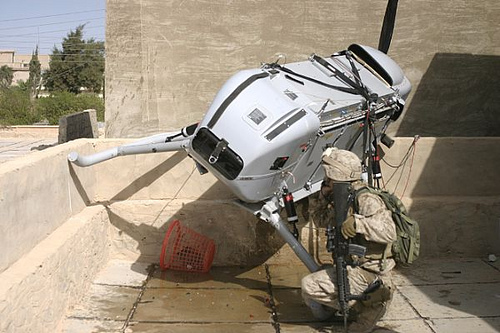Fool's design, 2013-03-01 18:43 »
Fool's design.
Bad button placement leads to drone crashes.Unmanned aircraft crash. In fact, they crash a lotÔÇöthough there's no recent specific data, the Congressional Research Service reported last year that despite improvements, "the accident rate for unmanned aircraft is still far above that of manned aircraft." And while many of those accidents can be attributed to exposure to hostile fire or operating in conditions when aircraft normally wouldn't, a significant percentage of drone crashes is caused by human error. A December 2004 FAA study of Defense Department drone crashes found human factors to be a causal factor in about a third of the cases they examined.
But as four human factors engineering researchers have found,
sometimes the accidents are by design. That is, the design of the systems that operators use to fly them are so bad that they invite accidents. In an article in the journal Ergonomics in Design,
the researchers found that bad ergonomics on ground control station hardware could be directly attributed to a small but significant number of crashes and may have played a major part in crashes that were attributed to other causes.Take, for example, a drone crash in 2006: as the operator was bringing the drone in for landing, he reached with a finger to flip the landing gear button on the control joystick but accidentally hit the ignition switch insteadÔÇöshutting off the engine in mid-flight. The $1.5 million drone plummeted to the ground and was a total loss. On another occasion, glare on a screen was so bad that a drone operator couldn't read an alert and mistook it for a landing signalÔÇöagain killing the engines before the drone had landed.
http://arstechnica.com/information-tech ... e-crashes/"Unmanned aircraft system (UAS) mishaps attributable to lack of attention to human factors/ergonomics (HF/E) science in their ground control stations (GCSes) are alarmingly high, and UAS-specific HF/E engineering standards are years away from development. The ANSI/HFES 100-2007 human factors standard is proposed as a specification for the design of UASes because of the similarity between general-purpose computer workstations and GCSes. Data were collected from 20 UASes to determine the applicability of commercial standards to GCS designs. Analysis shows that general-purpose computer workstations and UAS GCSes are up to 98% similar. Therefore, our findings suggest that the application of commercial human factors standards may be a good solution for minimizing UAS mishaps."
http://erg.sagepub.com/content/21/1/25

- DOWNEDUAV.jpg (98.99 KiB) Viewed 4815 times
Fool's design.
[b]Bad button placement leads to drone crashes.[/b]
Unmanned aircraft crash. In fact, they crash a lotÔÇöthough there's no recent specific data, the Congressional Research Service reported last year that despite improvements, "the accident rate for unmanned aircraft is still far above that of manned aircraft." And while many of those accidents can be attributed to exposure to hostile fire or operating in conditions when aircraft normally wouldn't, a significant percentage of drone crashes is caused by human error. A December 2004 FAA study of Defense Department drone crashes found human factors to be a causal factor in about a third of the cases they examined.
But as four human factors engineering researchers have found, [b][u]sometimes the accidents are by design. That is, the design of the systems that operators use to fly them are so bad that they invite accidents.[/u][/b] In an article in the journal Ergonomics in Design, [b]the researchers found that bad ergonomics on ground control station hardware could be directly attributed to a small but significant number of crashes and may have played a major part in crashes that were attributed to other causes.[/b]
[b]Take, for example, a drone crash in 2006: as the operator was bringing the drone in for landing, he reached with a finger to flip the landing gear button on the control joystick but accidentally hit the ignition switch insteadÔÇöshutting off the engine in mid-flight. The $1.5 million drone plummeted to the ground and was a total loss.[/b] On another occasion, glare on a screen was so bad that a drone operator couldn't read an alert and mistook it for a landing signalÔÇöagain killing the engines before the drone had landed.
http://arstechnica.com/information-technology/2013/03/pushing-the-wrong-button-bad-button-placement-leads-to-drone-crashes/
"Unmanned aircraft system (UAS) mishaps attributable to lack of attention to human factors/ergonomics (HF/E) science in their ground control stations (GCSes) are alarmingly high, and UAS-specific HF/E engineering standards are years away from development. The ANSI/HFES 100-2007 human factors standard is proposed as a specification for the design of UASes because of the similarity between general-purpose computer workstations and GCSes. Data were collected from 20 UASes to determine the applicability of commercial standards to GCS designs. Analysis shows that general-purpose computer workstations and UAS GCSes are up to 98% similar. Therefore, our findings suggest that the application of commercial human factors standards may be a good solution for minimizing UAS mishaps."
http://erg.sagepub.com/content/21/1/25
[attachment=0]DOWNEDUAV.jpg[/attachment]